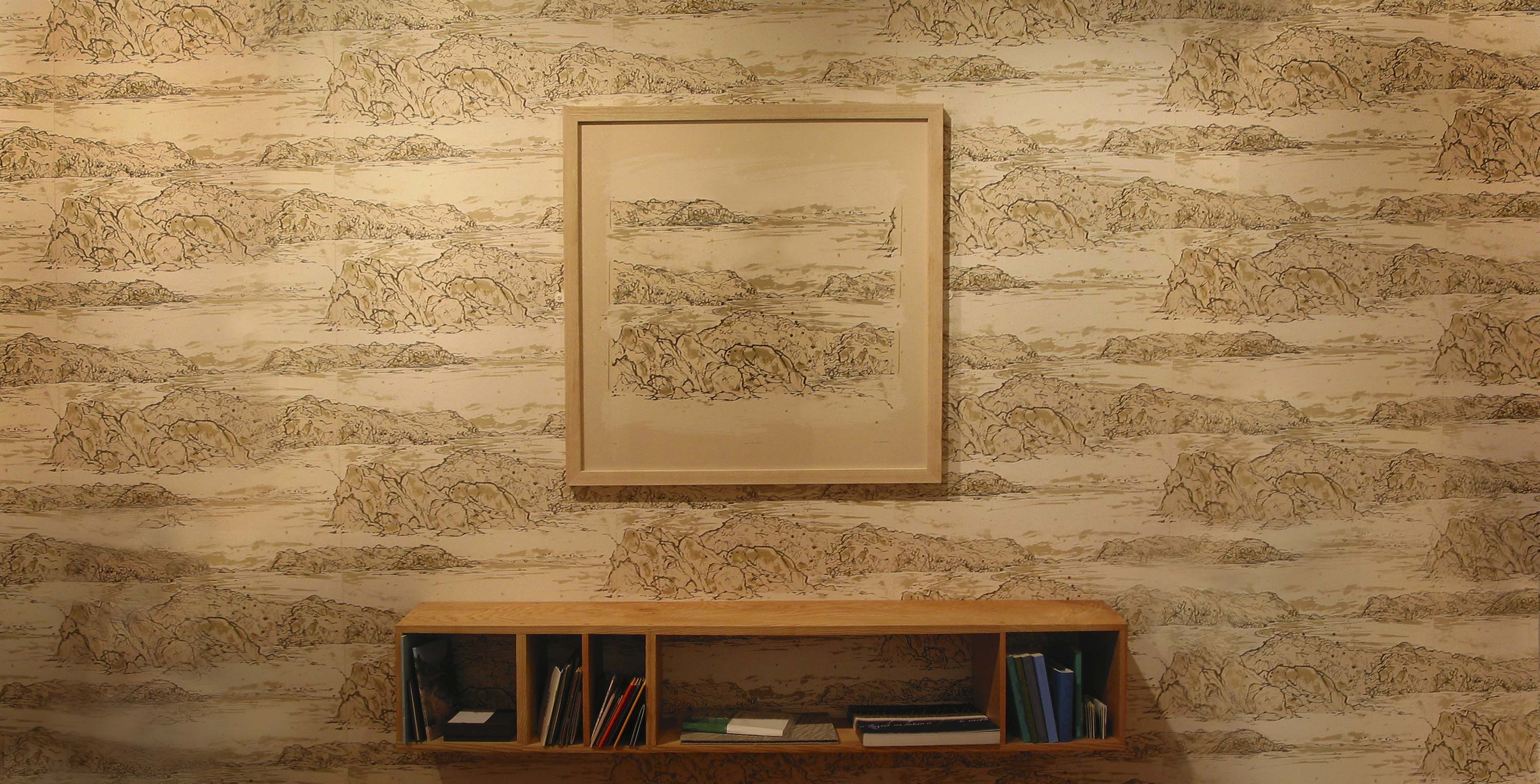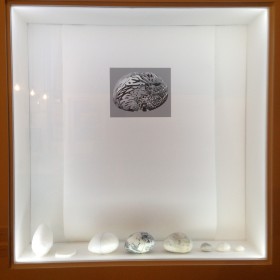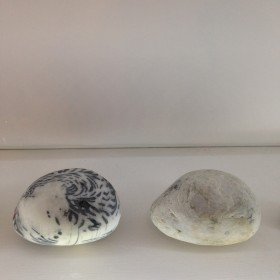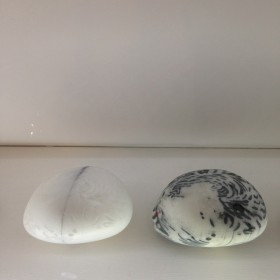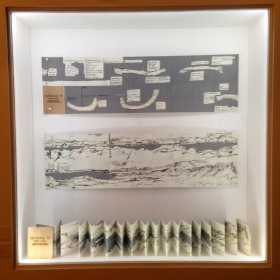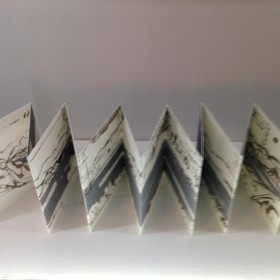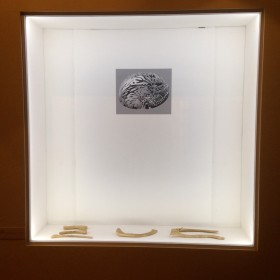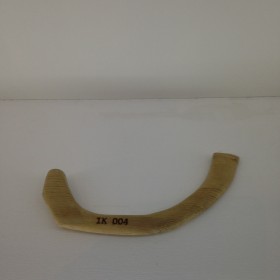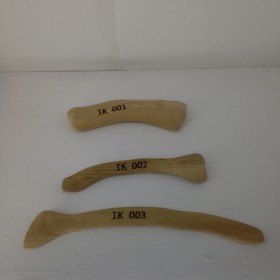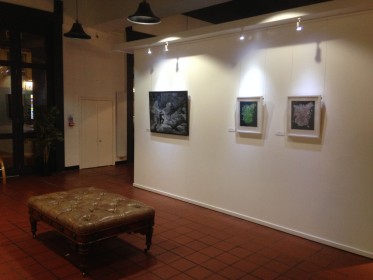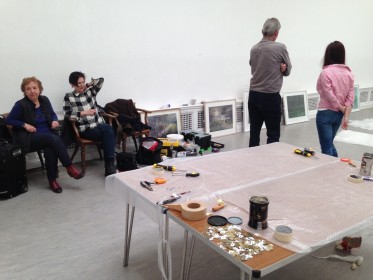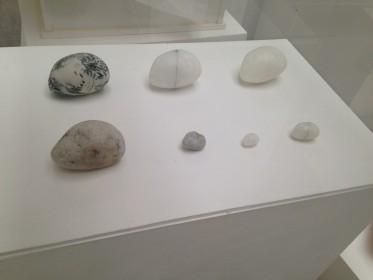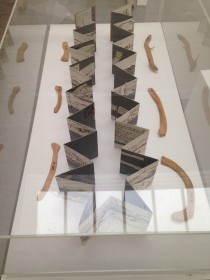Intranquility
The Society of Scottish Artists is delighted to bring their latest exhibition to Fire Station Creative. The show, titled ‘Intranquility’ , debuted in Ullapool last year and was originally conceived by artist Rosie Lesso who was interested in bringing together those members whose artwork explores less traditional approaches to landscape. The title, which means disturbed or restless, is a subversive play on the more commonly used word tranquility, often used when describing beautiful, calm and remote locations.
Artists were selected from the society's extensive membership which reaches across Scotland and beyond. There are a variety of formats featured in this exhibition including print, painting and digital media, but the one thing they have in common is their unusual approach to exploring landscape.
www.s-s-a.org
Artists Information
David Faithfull
Xenolith: a piece of rock within an igneous mass, not derived from original magma, originating from elsewhere.
The landscape, with its diverse natural elements, forms and inhabitants is a palimpsest of runes and geological rifts. Stones, rocks and alluvial plains shift slowly across the landscape in an ever changing metamorphic metamorphosis. And against these eternal geological displacements and rearrangements, humanities own nomadic toils are played out against the landscape, forged and moulded within their own social, political and national constraints. For Intranquility, Faithfull responds to this idea of restlessness by investigating once misplaced - now cognate - elements within the Scottish landscape. Thanks to Rob Jackson at the University of Dundee for the 3D printing and 3D modelling.
David Faithfull is an artist and printmaker based in Edinburgh.. He currently lectures at the University of Dundee. His practice involves a broad range of contemporary and traditional processes from installation and site interventions; to Artists Books, multiples and murals. Current themes include investigating landscape, alchemy and environmental issues. Recent exhibitions include ‘Holm Oak’ in the Pig Rock Bothy at the Scottish National Gallery of Modern Art and ‘Leviathan’ at Summerhall in Edinburgh. ‘Leviathan’ was first conceived on a residency on Inch Kenneth, with Mull Artists Collective 6°W and was exhibited at the Edinburgh Arts Festival. www.davidfaithfull.co.uk davidfaithfull.blogspot.co.uk
Katharine Aarrestad
‘because then you have to go on’ This simulacrum of ‘man’ lost in the wilderness considers the translation and obfuscation of meaning through different points in time.
Does such a representation of a windswept, untamed place attain a similar resonance for us now as it once did?
Can it provoke the same prickle up the spine, the tingle of the unknown and perhaps unknowable?
Do we sense its romance and the passion of the pursuit of the unconquerable in this post-colonialage or does it fall limply away from us, a relic repository to our dreams.
Katharine Aarrestad has an MA in Fine Art from Edinburgh College of Art and studied in Barcelona for her postgraduate degree in European Fine Art. Travels to India and South East Asia informed some of her earlier work, but she finds equal inspiration from foraging through libraries, museums and galleries with a particular predilection for the Victorian, the curious and the absurd.
Alastair Clark
Invented islands, imagined in different time periods.
In Evolution of an Island: Before Anyone- A landscape scoured by geological time but without any trace or evidence of any civilisation. Considerably later in time, Absolutely Everyone depicts the island once every inch of land is concreted, a twisted tangle of spaghetti like roads link the heavily industrialised and populated interior with its vast harbours that extend the coastline outward into the sea. Even the colour is unnatural. The work fuses coastlines from the north-west of Scotland near Scourie and Tarbert overlooking Handa Island and later I time, fuses these with Spaghetti Junction, Birmingham and Jersey Harbour.
Alastair Clark is an artist, printmaker and educator based in Edinburgh. A graduate of Edinburgh College of Art, Alastair is the Studio Director at Edinburgh Printmakers. He exhibits widely in Britain and abroad.
Liz Douglas
These two paper works dialogue the hand-made and the machine-made. In ‘Pockets of Light 3’ Douglas' research of three plants, first recorded in the 1700s around Ullapool and the north-west Highlands. These plants are found in limestone soil on the edge of the ‘Moine Thrust’ and have been growing there, probably since the ice age. They still exist today in small numbers despite major changes in land use.The ideas of ‘land at the edge of the sea’ or ‘sea at the edge of the land’ are visual metaphors that interest Douglas and these, together with her research, are used as a way of linking the past with the present and an imagined future. ‘Raft’ uses drawings of plants from a specific site of scientific interest in Scotland as research material to create a woven paper piece exploring themes of interconnectivity.
My practice involves researching material from the landscape at both macro and micro level in order to make paintings, drawings and prints. Contemporary practices in relation to traditional methods, are a constant challenge in order to find innovative ways of making work that challenges my perception of landscape I have researched specific sites in the Scottish Borders, Dumfries and Galloway, and Angus, and have collaborated with Scottish Natural Heritage,The Royal Botanic Gardens, Edinburgh, The Borders Forest Trust, and The Carrifran Wildwood Project. Liz Douglas is a graduate of Edinburgh College of Art. She lives and works in the Scottish Borders.
www.lizdouglas.co.uk
David Forster
If there is a castle standing on the heath. (Ravelston, Edinburgh) The place shown is a nature reserve built around an old stone quarry in the north of Edinburgh, though certain small liberties have been taken with the scene. I feel we invest such landscapes with meaning and stories, and yet they really have a meaning entirely beyond our understanding. There is a persistent mystery in the banal which I have tried to capture here.
David Forster’s intensely detailed landscape paintings are true to the topographical details of the places depicted, but evoke the imagined realm as inspired by the encounter with the real. Such a quality is heightened by his use of non-naturalistic lighting effects and other atmospheric interventions. In this he references the symbolist traditions of eighteenth and nineteenth century painting. He takes as titles quotations from the brothers Grimm, thereby relating the work to a common cultural narrative of landscape. He has exhibited for over 20 years in Edinburgh, London and France, and is a professional member of both the Society of Scottish Artists and the Royal Scottish Society of Painters in Watercolour. Among other awards, in 2005 he was runner up in the Sunday Times Watercolour Prize, an award he subsequently won in 2013.
Su Grierson
‘Allotted Space’ Image, Video and objects. ‘Landscape’ is a human construction: we use it, enjoy it and control it for our own ends. The work ‘Allotted space’ acts as a visual reminder of the ways and the extent to which we designate and control environmental space for our own needs. The work includes a printed image and two standing plinths with handmade objects and a wall based video. A further digital print ‘Way out…’ brings together image and text.
Su Grierson is a visual artist whose main practice utilises, video, image and sound, and presents land and landscape from differing non traditional perspectives. Working on a project basis, she exhibits in galleries, outdoor locations and other venues in Scotland and internationally. She aims to visually and aurally stimulate understanding and awareness of the land. Graduating Master of Fine Art at Glasgow School of Art in 1995, she is also actively involved in developing contemporary art and supporting artists living outside of the urban centres. Working collaboratively and across media and other art platforms is a current interest.
www.sugrierson.com www.aerialroots.org www.blacktentvideo/wordpress.com facebook.com.Track-and-Trace
ILLUSTRIOUS ART SOCIETY BRINGS NEW EXHIBITION TO PEEBLES.
Scotland’s leading society of art, the Society of Scottish Artists, is set to bring their latest show to Peebles.
Featuring work by six contemporary artists, the exhibition, which has already attracted crowds to previous showings in Ullapool and in Dunfermline, is due to open at Tweeddale Museum on 1 April 2017.
The exhibition title, Intranquility, which means disturbed or restless, is subversive play on the more commonly used word tranquility, often used when describing beautiful, calm and remote locations.
Using this idea as inspiration, artists Katharine Aarrestad, Alastair Clark, Liz Douglas, Su Grierson, David Forster and David Faithfull, all members of the society, have come together to explore less traditional approaches to landscape and ask questions about the role of land, place and the environment in contemporary art.
Society president, Gayle Nelson said:
“The artists were selected from the society's extensive membership which reaches across Scotland and beyond. There’s a variety of formats featured in this exhibition including print, painting and digital media, but the one thing they have in common is their unusual approach to exploring landscape.
"The Society of Scottish Artists are very keen to work in locations out with Edinburgh and have not yet had the opportunity to exhibit in Peebles. We are delighted to present this popular exhibition at Tweeddale Museum."
Since 1891 the Society of Scottish Artists has held its high-profile Annual Exhibition in the grand RSA Academy Building on The Mound in Edinburgh.
The Society has long aimed to represent adventurous work from Scotland and further afield with exhibitions including the work of the Post-Impressionists, Gauguin, Cezanne, Matisse and Van Gogh in 1913.
In 1922 the Society presented work by Picasso, Daumier, Degas and Forain. In 1931, the Society showed, for the first time in the UK, twelve canvases by the then highly controversial Edvard Munch who went on to become a member of the Society.
Today, the Society of Scottish Artists continues in the spirit of its founders, to show the controversial and the unexpected and to give hanging space to new artists of promise.



